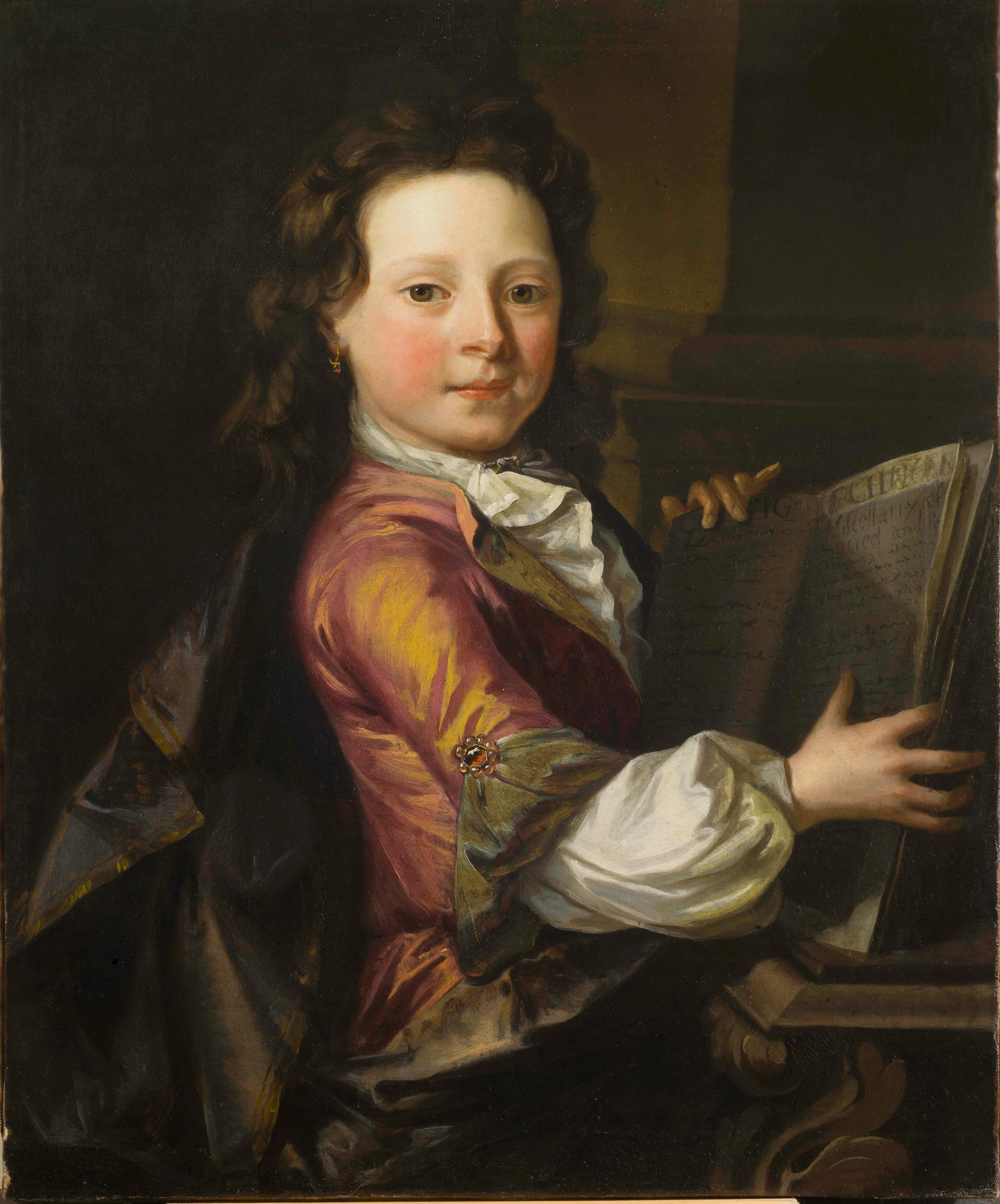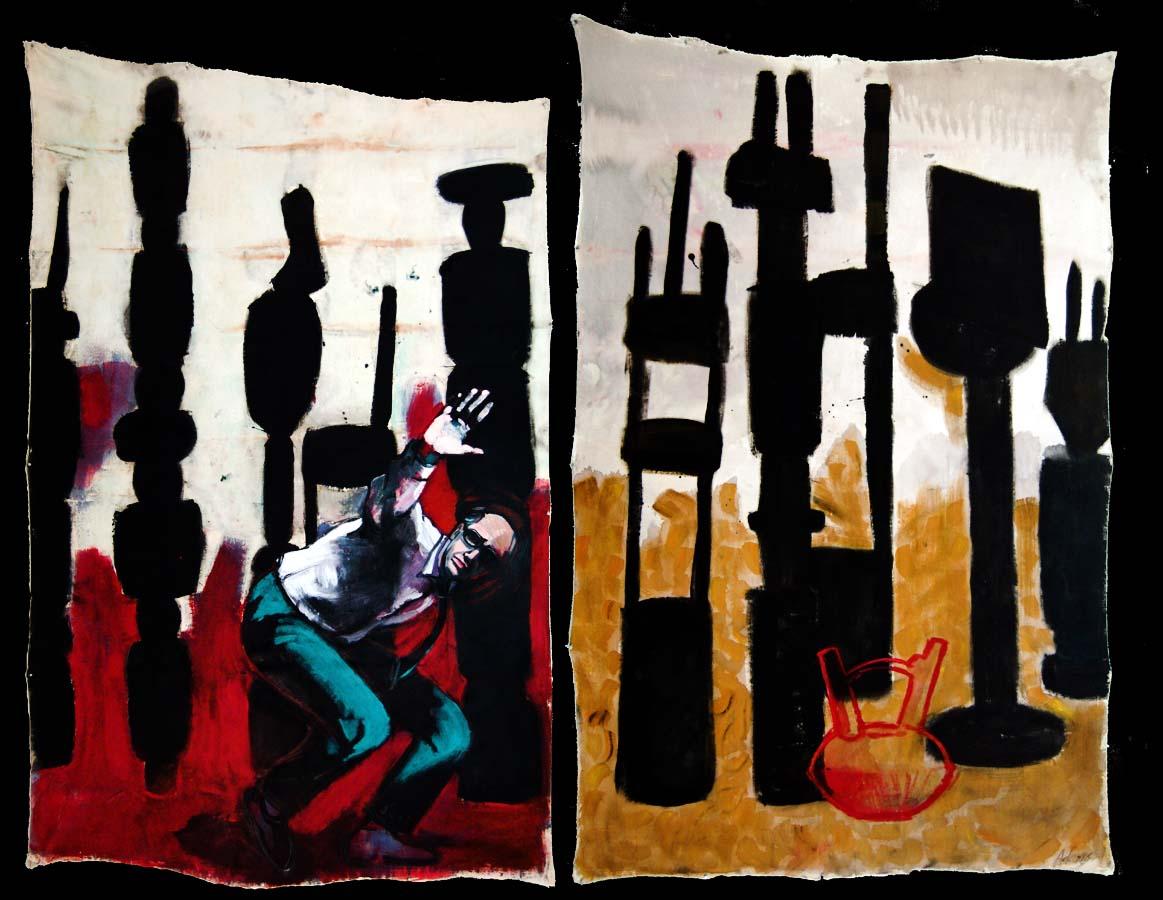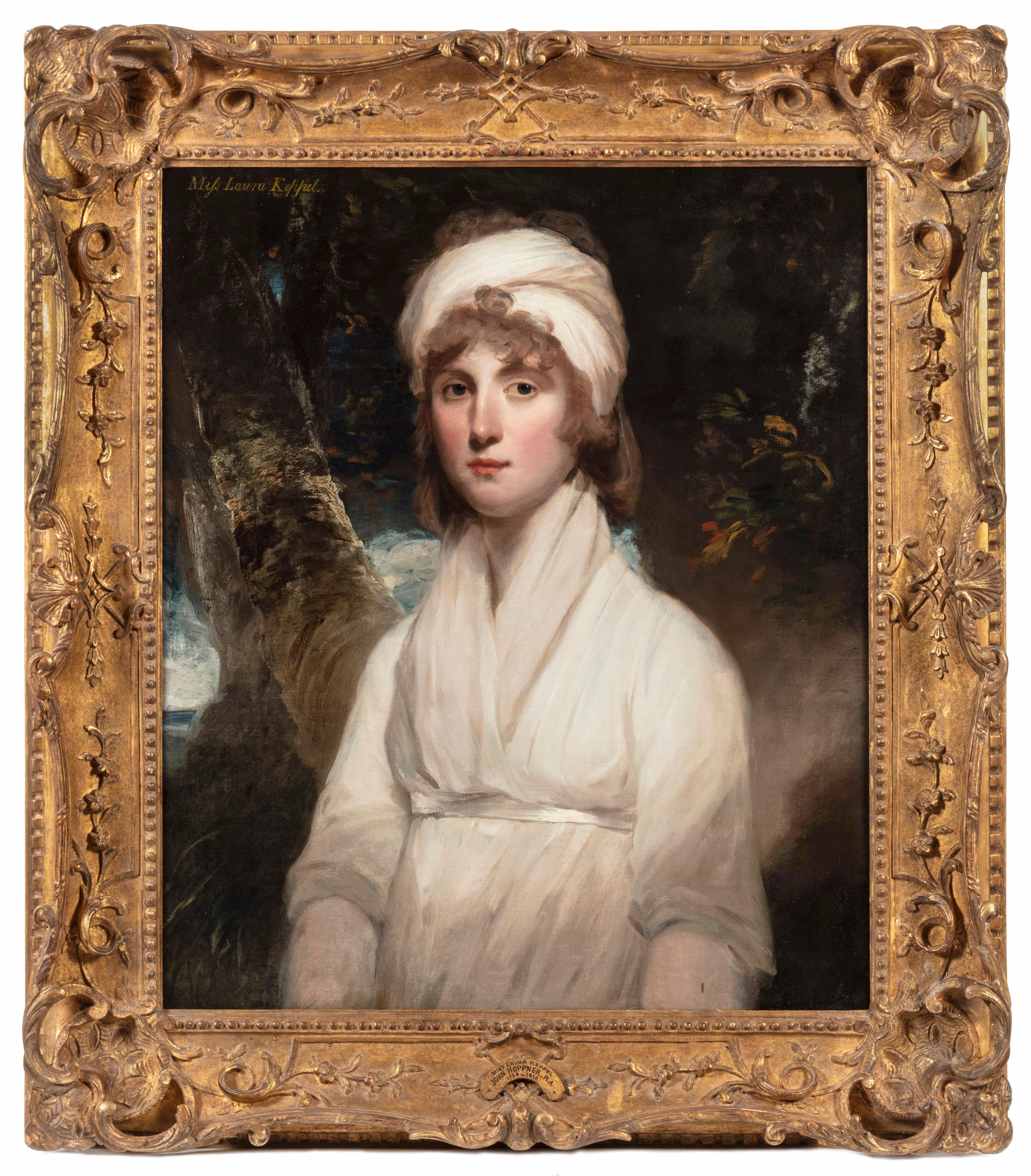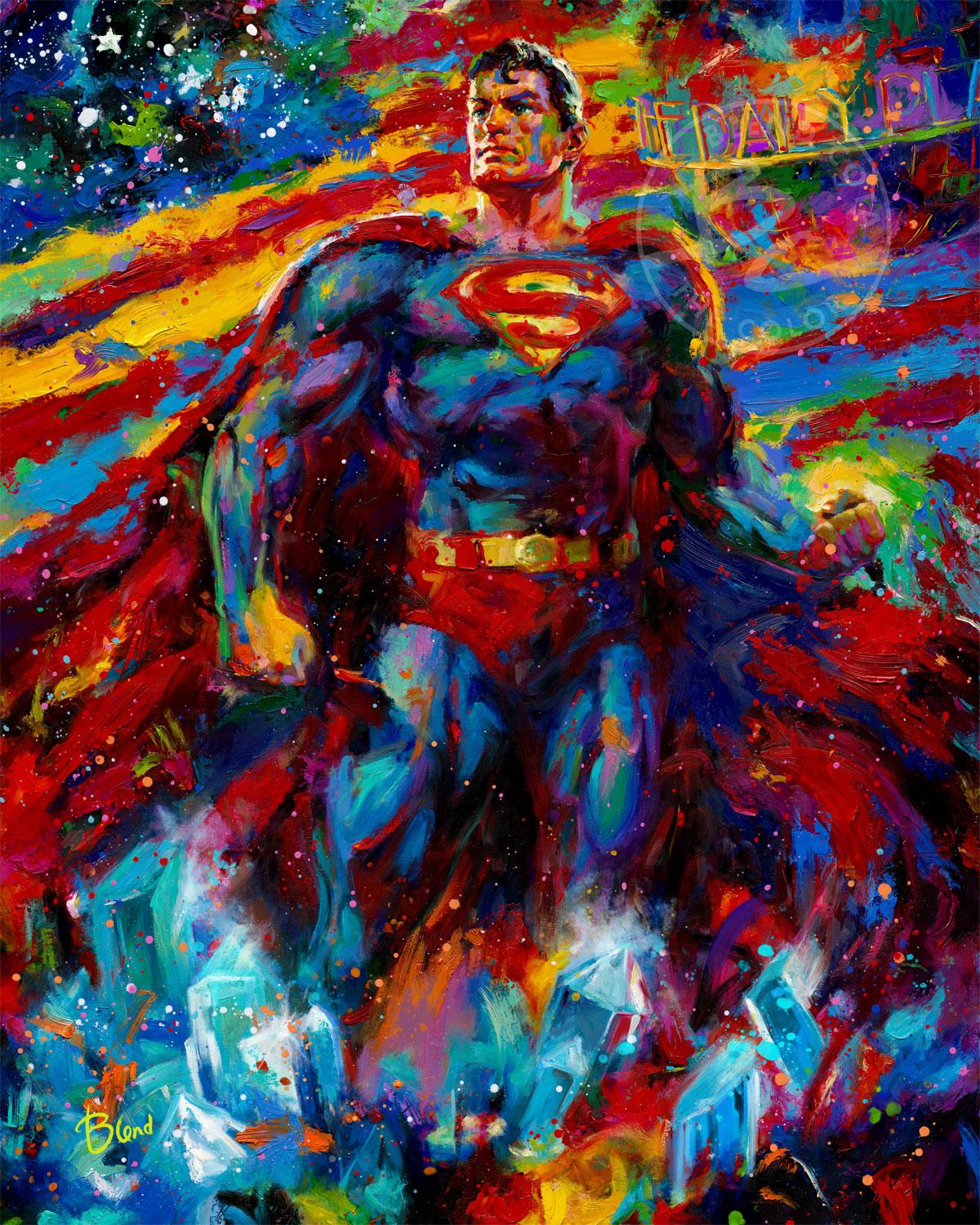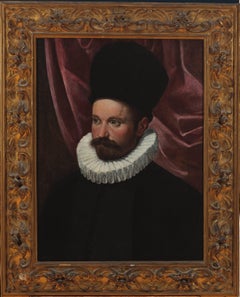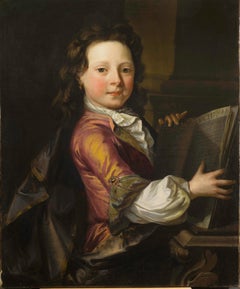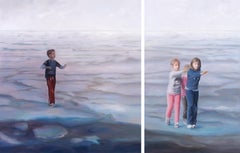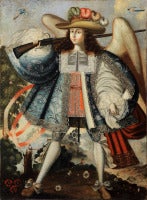
Angel Arcabucero (Spanish Colonial Arcangel of the Cuzco School)
View Similar Items
Want more images or videos?
Request additional images or videos from the seller
1 of 5
UnknownAngel Arcabucero (Spanish Colonial Arcangel of the Cuzco School)
About the Item
- Medium:
- Period:
- Condition:Good.
- Gallery Location:New York, NY
- Reference Number:1stDibs: G13082710275

About the Seller
5.0
Recognized Seller
These prestigious sellers are industry leaders and represent the highest echelon for item quality and design.
Established in 1997
1stDibs seller since 2012
17 sales on 1stDibs
Typical response time: 11 hours
More From This SellerView All
- Portrait of a GentlemanBy Ippolito Scarsella (Scarsellino)Located in New York, NYProvenance: Suida-Manning Collection, New York Private Collection Exhibited: Venetian Paintings of the Sixteenth Century, Finch College Museum of Art, New York, October 30-December 15, 1963, no. 31. Veronese & His Studio in North American Collections, Birmingham Museum of Art, Oct. 1-Nov. 15, 1972, and Montgomery Museum of Fine Arts, Dec. 5-Dec. 31, 1972 Literature: Robert L. Manning, A Loan Exhibition of Venetian Paintings of the Sixteenth Century, exh. cat. New York 1963, cat. no. 31ill., as by Veronese Stephen Clayton and Edward Weeks, eds., introduction by David Rosand, Veronese & His Studio in North American Collections, Birmingham 1972, as by Veronese, p. 38 ill. Terisio Pignatti, Veronese, Venice 1976, I, p. 199, cat. no. A225, II, fig. 908, as attributed to Veronese Terisio Pignatti and Filippo Pedrocco, Veronese; catalogo completo dei dipinti, Florence 1991, no. 54°, as attributed to Veronese. Terisio Pignatti and Filippo Pedrocco, Veronese, Milan 1995, II, pp. 517-518ill., cat. no. A 56, under attributed paintings, by Veronese and workshop) John Garton, Grace and Grandeur; The Portraiture of Paolo Veronese, London-Turnhout 2008, p. 237, fig. 77, cat. no. R16, as workshop of Veronese. Scarsellino’s art is widely regarded as critical link between the Renaissance and the Baroque styles in Emilian painting; not only was he an important transmitter of the heritage of the Renaissance, but he was also open to innovative ideas, and was one of the earliest to experiment with the trend to naturalism that would become fundamental to art of the new century. Born around 1550, he received his earliest training from his father Sigismondo, an architect and painter; it was probably while working at his father’s side as a youth that he acquired the nickname Scarsellino, or “little Scarsella”. After absorbing the principles of his art in Ferrara and Parma, he went to Venice in 1570, staying for four years and working in the shop of Veronese. In the following decade, his art —especially in terms of its piety and its development of landscape— demonstrates a strong sympathy with that of the Carracci, with whom he worked in 1592-1593 at the Palazzo dei Diamanti in Ferrara. Maria Angela Novelli and later Alessandra Frabetti both propose that Scarsellino traveled to Rome, although such a trip has not been documented; if he did travel to Rome, it probably would have occurred during the years that Scarsellino’s colleagues Agostino and Annibale Carracci were there, that is, beginning in 1595 and until 1609. The last decades of Scarsellino’s career again involve stylistic experimentation, this time in a manner that would bring his work very close to the progressive figurative naturalism of Carlo Bononi and prepare the way for Guercino. The present portrait of a distinguished gentleman had been long thought to be by Paolo Veronese and was in fact attributed to him by such distinguished connoisseurs as Adolfo Venturi and Wilhelm Suida. The portrait’s style is, however, distinct from Veronese’s, although clearly indebted to it, and the attribution to the young Scarsellino is wholly convincing. The painting would then date from the 1570s – a date confirmed by the costume the subject wears. The puffed hat that appears in the painting had a rather short-lived vogue in the early 1570s. One sees it in Giambattista Moroni’s Portrait of Count...Category
18th Century and Earlier Baroque Portrait Paintings
MaterialsCanvas, Oil
- Portrait of Laura Keppel, later Lady SouthamptonBy Sir John HoppnerLocated in New York, NYInscribed, upper left: “Miss Laura Keppel” Provenance: Commissioned from the artist and by descent in the Keppel family estate, Lexham Hall, Norfolk, to: Major Bertram William Arnol...Category
18th Century Paintings
MaterialsCanvas, Oil
- Saint Martin de PorresLocated in New York, NYProvenance: Private Collection, New York, until 2022. Martín de Porres was born in Lima in 1579, the illegitimate son of a Spanish-American father, J...Category
Late 18th Century Paintings
MaterialsCanvas, Oil
- Portrait of a GentlemanLocated in New York, NYCircle of Jacques-Louis David (French, 18th Century) Provenance: Private Collection, Buenos Aires Exhibited: “Art of Collecting,” Flint Institute of Art, Flint, Michigan, 23 November 2018 – 6 January 2019. This vibrant portrait of young man was traditionally considered a work by Jacques-Louis David, whose style it recalls, but to whom it cannot be convincingly attributed. Rather, it would appear to be by a painter in his immediate following—an artist likely working in France in the first decade of the nineteenth century. Several names have been proposed as the portrait’s author: François Gérard, Louis Hersent, Anne-Louis Girodet (Fig. 1), Theodore Gericault, and Jean-Baptiste Wicar, among others. Some have thought the artist Italian, and have proposed Andrea Appiani, Gaspare Landi...Category
18th Century Old Masters Paintings
MaterialsCanvas, Oil
$45,000 - Portrait of George and Edward Finch-Hatton in Van Dyck DressBy David MartinLocated in New York, NYAppointed Portrait Painter to the Prince of Wales in Scotland in 1785, David Martin was the leading Scottish portrait painter of his generation. The artist is best known in the United States for his portrait of Benjamin Franklin, which is in the White House collection, Washington, D.C. The sitters depicted in this double portrait were the sons of the British diplomat Edward Finch-Hatton. George (1747-1823), later of Eastwell Park, Kent, is shown seated, reading an ancient charter or medieval manuscript...Category
18th Century and Earlier Paintings
MaterialsCanvas, Oil
- Madonna and Child with Angels in the CloudsLocated in New York, NYProvenance: Charles H. and Virginia Baldwin, Claremont, Colorado Springs, Colorado ca. 1907-1934; thence by descent until sold in 1949 to: Charles Blevins Davis, Claremont (renamed Trianon), Colorado Springs 1949 -until gifted in 1952 to: The Poor Sisters of Saint Francis, Trianon, Colorado Springs, 1952 until acquired, 1960, by: John W. Metzger, Trianon, renamed as the Trianon School of Fine Arts, Colorado Springs, 1960-1967; when transferred to: The Metzger Family Foundation, Trianon Art Museum, Denver, 1967 - 2004; thence by descent in the Metzger Family until 2015 Exhibited: Trianon Art Museum, Denver (until 2004) The present work is a spectacular jewel-like canvas by Amigoni, rich in delicate pastel colors, most likely a modello for an altarpiece either lost or never painted. In it the Madonna stands firmly upon a cloud in the heavens, her Child resting on a delicate veil further supported by a cloud, as he gently wraps his arm around his mother’s neck. From above angels prepare to lower flowers and a wreath, while other angels and seraphim surrounding the two joyfully cavort. Dr. Annalisa Scarpa, author of the forthcoming monograph on Jacopo Amigoni...Category
18th Century and Earlier Figurative Paintings
MaterialsCanvas, Oil
You May Also Like
- Portrait of a Boy, John Closterman, Large English Portrait Art, Old MasterBy John ClostermanLocated in Greven, DEJohn Clostermann (Osnabrück 1660 - 1711 London) Portrait of a boy, maybe Charles Hinde Oil on canvas, 61 x 74,6 cm John Closterman (also Klosterman) was a portrait painter of the late 17th and early 18th centuries. He primarily portrayed English noblemen and European aristocratic families. His father was already an artist and he trained his son. In 1679 he went to Paris and studied with Francois de Troy. In 1681 he was in London and worked for the artist John Riley, whose studio he took over after his death. In 1696 he was invited to the Spanish court...Category
17th Century Baroque Figurative Paintings
MaterialsCanvas, Oil
- Island of Broken Toys (diptych)Located in Burlingame, CA'Island of Broken Toys' 2019, a diptych contemporary oil on canvas painting by Tamera Avery, whose paintings are created with wit and wisdom. Avery's work...Category
21st Century and Contemporary Contemporary Portrait Paintings
MaterialsCotton Canvas, Oil
- Ralph Pallen Coleman (American 1892-1968) A Monumental Painting of Jesus ChristLocated in New York, NYRalph Pallen Coleman (American 1892-1968) A Monumental Painting of "The Resurrection of Jesus Christ", circa 1940. Measuring 102" high x 77" wide (framed), this massive oil on canvas painting is truly one of a kind. The quality throughout the entire painting is masterful. The painting is very realistically painted with bright, vibrant, colors which shows the artists true passion and love for Jesus and Christianity. Ralph Pallen Coleman was an American painter and illustrator. His career spanned more than half a century during which he illustrated stories for many magazines, and later, religious illustrations and paintings which provided images of Christianity to millions of people during the 1950s-1960's. A native of Philadelphia, Pennsylvania, he grew up and lived there throughout his 75 years. He received his formal art education at the Philadelphia School...Category
1940s Portrait Paintings
MaterialsOil, Canvas
- Oil Painting / Photorealism / Figurative Art / Human Figure /MuseumBy Bruce AdamsLocated in Buffalo, NYBruce Adams was a painter, art educator, and writer. Born in Buffalo, N.Y., in 1952, he received a B.S. in 1976 and an M.A. in 1983 from Buffalo State College. Adams’s work is includ...Category
1980s Contemporary Figurative Paintings
MaterialsCanvas, Oil
- Men portraitBy Giovanni Maria delle Piane dit Mulinaretto (Genoa 1670 - Monticelli d´Ongina 1745)Located in BELEYMAS, FRGiovanni Maria DELLE PIANE, known as IL MULINARETTO (Genoa, 1660 – Monticelli d'Ongina, 1745) Portrait of a man Oil on oval canvas H. 108 cm; L. 83 cm Provenance: Nino Ferrari Colle...Category
1730s Italian School Figurative Paintings
MaterialsCanvas, Oil
- Model undressingLocated in BELEYMAS, FRJulius EXNER (Copenhagen, 1825 - Copenhagen, 1910) Model stripping Oil on canvas H. 122 cm; L. 74 cm Signed and dated 1842 lower right Exhibition: most likely Charlottenborg Salon of 1845, under number 110, titled Modelfigur, awarded with a silver medal Provenance: Emilio Fernando Bolt (c.1860 - 1944), acquired from the artist around 1900, then by descent Our painting was produced as part of the summer sessions organized between 1839 and 1850 by Christoffer Wilhelm Eckersberg (1783-1853), the master of Danish painting of the first half of the 19th century, in his private studio-apartment on the ground floor. floor at the Royal Academy of Fine Arts in Copenhagen. The master brought together a few students there between June and September, rented one or two models for the season, which were painted from different angles, the artists (including Eckersberg himself) sitting side by side. Eckersberg used to paint a fairly small version, the pupils of the larger formats. The work fits more generally into the legendary context of the research and reforms carried out by Eckersberg concerning the studies of nudes and in particular of female nudes, to make this exercise a genre of painting in its own right. Following his two-year stint in Jacques-Louis David's studio in Paris in 1811, Eckersberg had been made aware of work on the nude and in particular on live models, in natural light, while in Denmark the drawings were then only made from casts of antique models or other mannequins. In 1822, when he had been a professor there since 1818, it was he who had the Royal Academy of Copenhagen authorize the study of nudes, no longer in the evening by candlelight, but in natural light; from 1833, it was still he who allowed students to work on nude female models, even if the official authorization of the Academy did not take place until 1839. It was this same year that he instituted his summer sessions, on a private basis, to orient his painting and that of his students towards a new conception of the representation of models: even if the nude remains the real theme, it does not however, this is more than just an academic exercise. The subject is placed in a contemporary interior, with a rather sophisticated decor, and occupied with an intimate activity (it is this type of intimate vein that we will find later in Degas or Cassatt for example); thus in our painting, the young woman is supposed to take off her clothes to wash. The objective is that the viewer forgets that the master and his students are painting a model during a posing session, and that he instead has the impression of being alone with the model, but invisible, almost like a voyeur in spite of himself. Moreover, in these paintings, the model never looks towards the spectator, inducing a psychological distance with him, whereas model and artist are actually physically very close. On the other hand, it is not a question of idealized nudes either, even if Eckersberg, proof of his debt to the antique, chooses fairly classic models and poses. The sensuality is real and very present, with dreamy, even innocent, and timeless expressions (the models do not seem to have a defined age), suave and slow attitudes and movements, and especially with clothes that hide or reveal skillfully parts of the female body: upper buttocks, pronounced hips... Made by an artist under 20, our sensual painting is probably one of the most beautiful and spectacular produced by the students of Eckersberg during these summer sessions. With a perfect balance between the firmness of an ancient statue (it recalls the Venus de Milo) and the softness of the feminine forms, highlighted by a harmonious palette, it captures the attention with many details: the almost photographic folds white clothing...Category
1840s French School Nude Paintings
MaterialsCanvas, Oil
Recently Viewed
View AllMore Ways To Browse
Spanish Colonial School
Cuzco Painting
Cuzco School
Cuzco Art
Antique Lace Blouse
Antique Lace Blouses
Antique Hand Cuffs
White Church Shoes
Colonial Soldiers
Antique Gun Oiler
Spanish Colonial Painting Cuzco School
Stars Embroidery
Jacob Angel
Antique Shoe Last
Indigenous Feathers
Celestial Engravings
Antique Ribbon Embroidery
Antique Work Blouse
